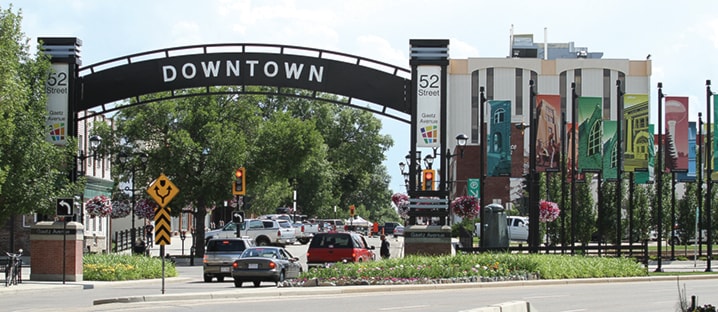According the city’s 2016 census, 975 residents have packed up and hit the road. The city’s population shrunk one per cent from 100,807 last year to 99,832, but Red Deer is still the third largest city in Alberta.
Last year the city celebrated when it surpassed the 100,000 population mark by a installing a plaque in City Hall Park and naming its 100,000th citizen.
Mayor Tara Veer said it’s obviously disappointing to see a slight population drop since growth has been strong for many, many years.
“Given the economy that we’re navigating through, it’s not entirely surprising. While the reasons people may leave a community are complex, we know that the new economic normal that we’re navigating through is likely a strong factor,” Veer said on Wednesday after census results were released.
“As much as we have shown a lot of diversification in our local economy, we still do have a very strong oil and gas sector reliance and people here from other communities who were working in that sector.”
She said Edmonton, Calgary and other mid-sized cities have not yet released census data so it’s unknown whether Red Deer is part of a trend.
She said Lethbridge did show a slight population increase this year, but students and temporary workers are included in its count.
Red Deer only counts permanent residents, which is used to calculate grant funding from the province and federal governments.
This year grant funding increased to $236 from $185 last year because the city crossed the 100,000 threshold and was eligible for more grants, she said.
“We think on the grant position we’re still in a strong position.”
During the 2008 recession Red Deer grew by 2.5 per cent to 87,816.
“We’re in a deeper and more retracted recession than we were in 2008. But because of the public sector investment because of the Canada Winter Games, coming from both the federal and provincial government, it stabilized our local economy.”
But private sector investment has fallen, she said.
Since 2000, the lowest population increase was in 2010 at 0.2 per cent which could probably be explained by the impact of the 2008 recession which generally takes two years to see, she said.
“As much as we might acknowledge that the economy is likely playing a strong factor this year, because it is an anomaly for Red Deer not to be in a growth position, I think we still need to position ourselves for new development and population in both in the province and be competitive for development in our region as well.
“This slight decline certainly highlights our need to continue to pursue strategic economic development initiates such as polytechnic university status for Red Deer College to not only attract population but keep the population that we have as well.”
To read the full census report visit reddeer.ca/census.
szielinski@www.reddeeradvocate.com
